The baby carrier is the perfect thing to have on hand. Not only does it keep your hands free, but it also lets your baby feel safe and happy while giving you a little break from carrying them. But when you’re new to wearing a baby in a carrier, figuring out how to make them comfortable can be an overwhelming task.
Here are nine tips to follow to make the baby as comfortable as possible
Table of Contents
- Proper placement of baby
- Take advice from the shop assistant
- Buy the proper Carrier
- Get the right size
- Avoid using with infants under Four months
- Stop using the carrier if the baby is too heavy
- Properly tighten the straps
- Use the correct position to carry depending on the age
- Don’t use over long periods
- Frequently Asked Questions
- What are the Types of Baby Carriers?
- Do you need a baby carrier?
- What are the advantages of using a baby carrier?
- Is there anything that I should watch out for?
- What are the safety standards for baby carriers?
- What if I’m not sure how to fit my baby in a carrier or sling?
- What are the best baby carriers?
- Conclusion:
Proper placement of baby
Correctly place the baby so that the hip is positioned correctly.
The baby’s hips should be spread, so their legs are straddling your body.
Even the knees should be spread apart, the thighs well supported, and hips bent.
This helps proper hip development and reduces the chance of Hip dysplasia.
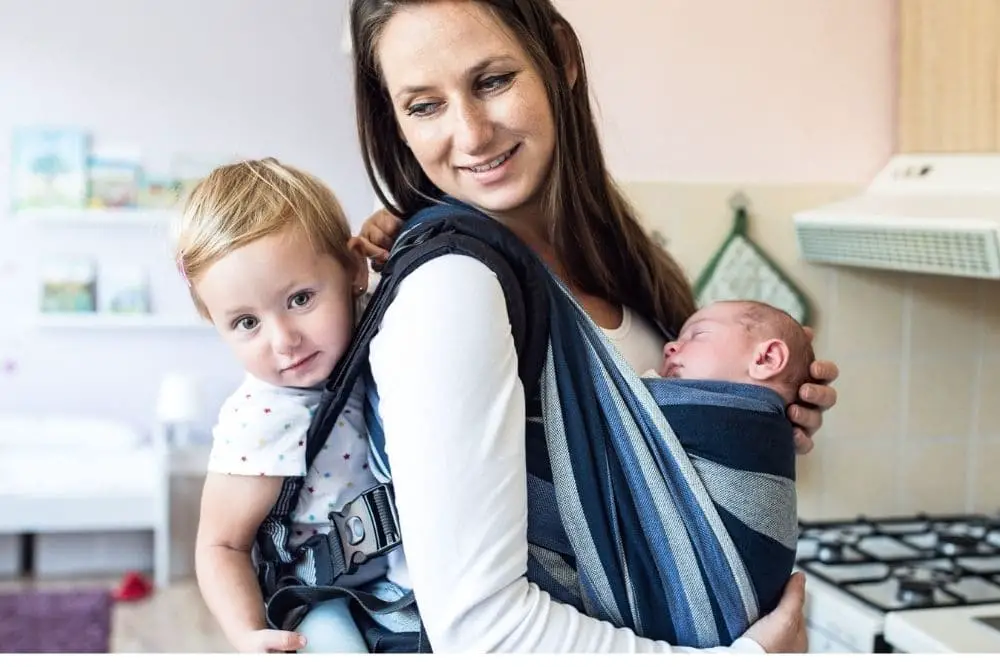
Take advice from the shop assistant
Hey! By the way… any links on this page that lead to products on Amazon are affiliate links and I earn a commission if you make a purchase.
Thanks in advance – I really appreciate it!
While shopping for a Carrier, make sure to ask a shop assistant to show you how to wear the Carrier correctly with your baby.
Your baby should be able to move its head and limbs freely. Make sure your baby can see out of the carrier and that the carrier fabric doesn’t cut into their face.
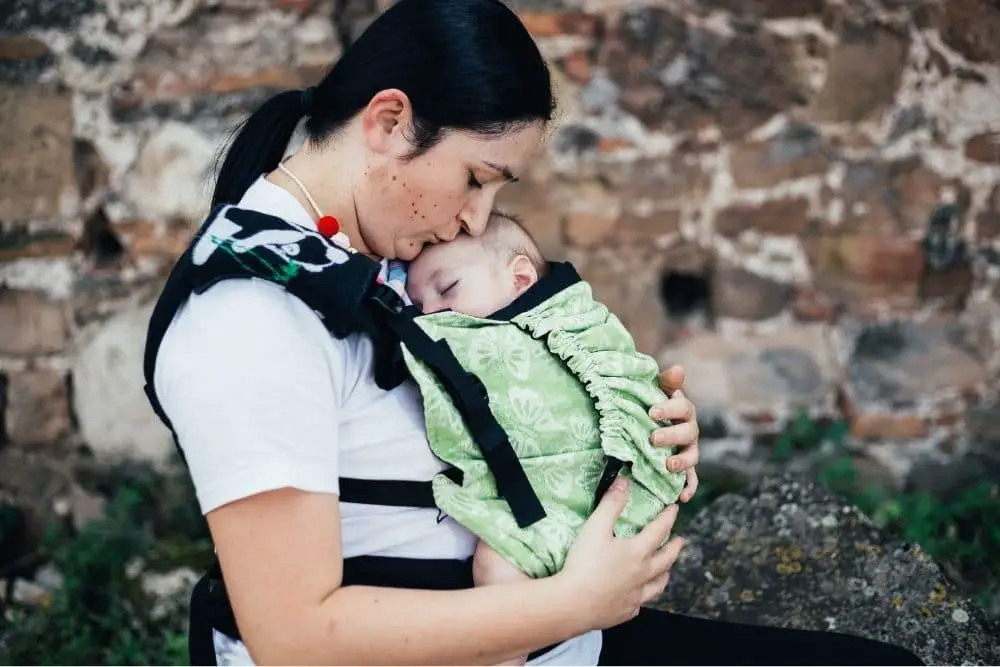
Buy the proper Carrier
While buying a baby carrier, look for the following features
a) It should have broad, padded shoulder straps and waist belt that go round your back and a wide waist strap. Also, make sure that there is proper padding on the waistband, hip belt, and shoulder straps.
The above help to distribute your baby’s weight evenly and reduces the pressure on your shoulders. In addition, this also prevents the carrier from moving sideways too much.
b)Your baby won’t get overheated in the warmer months if the carrier is appropriate for different seasons.
c)If you want the carrier to grow with your baby, make sure it can be adjusted for different carry positions.
d) It should offer different carrying positions for the baby – front facing, back facing, hip carrying, and back carrying.
e) Cotton fabric is preferable, so it does not irritate the infant’s skin.
Get the right size
Check the height and weight specifications to ensure you get a suitable baby carrier for your baby’s size and weight range.
Avoid using with infants under Four months
Do not use Baby carriers if your baby is under four months of age as they can’t hold up their heads yet and are at greater risk of neck injuries. However you can use carriers for newborns if you follow certain strict guidelines.
Stop using the carrier if the baby is too heavy
Don’t use the carrier if your baby feels too heavy to carry safely.
Check the carrier’s tags for the maximum weight permissible.
.
Properly tighten the straps
Make sure to properly tighten the straps before you put your baby in, then adjust the straps to get a snug and secure fit.
However, don’t tighten straps too much.
When the baby is in, his spine should be in a ‘C’ shape, which is the natural shape.
If you tighten too much, it could put pressure on the spine. Further, the breathing could get affected and also increase the chances of overheating.
Adjust the straps for maximum comfort.
Take help to learn about how to put your baby in the carrier properly. Some mothers practice with a doll before actually inserting their baby.
Use the correct position to carry depending on the age
Carrying positions and when to use them.
The main baby carrying positions include:
Front inward facing
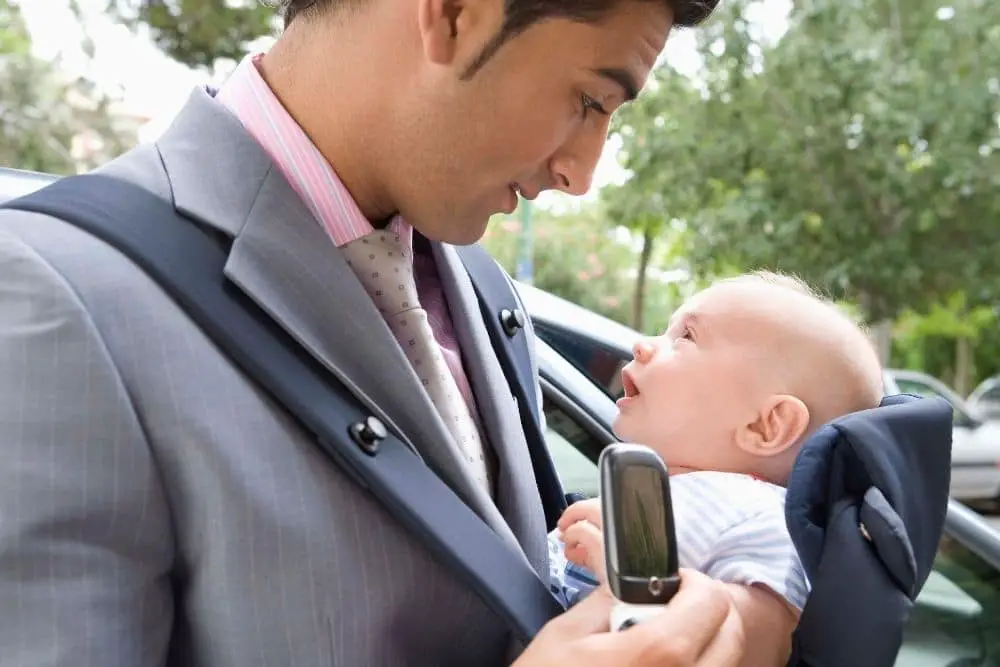
Babies should only be worn on the front, facing inward until they are 3 to 6 months old and have some neck control.
After that age, you can use other positions.
Front outward facing
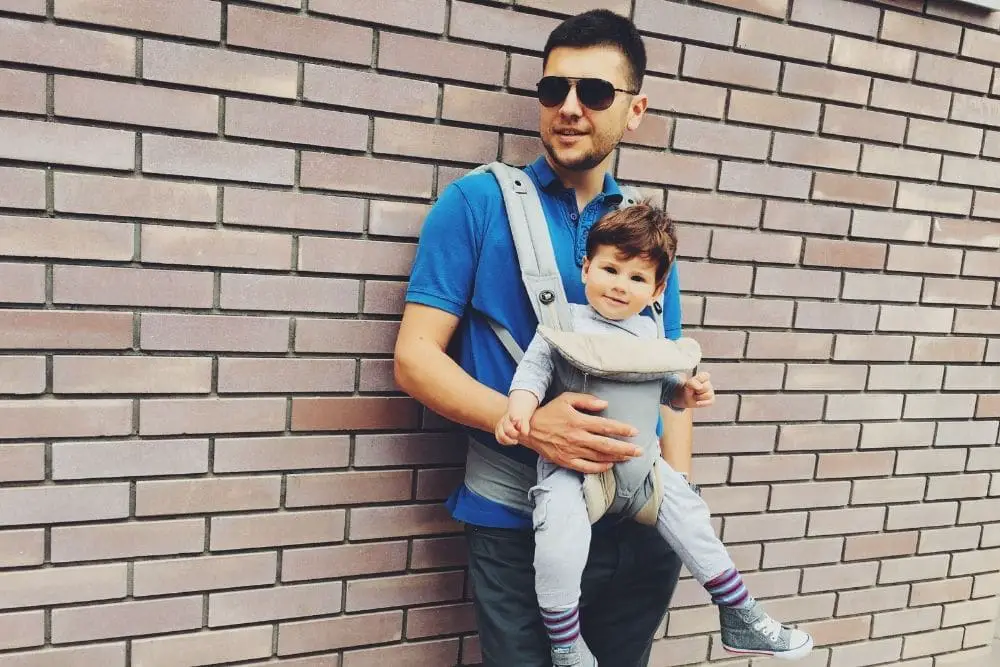
Use this position when the neck is strong enough to hold up his head ( which could be as early as four months or at least up to six months old).
Hip carry
Back carry.
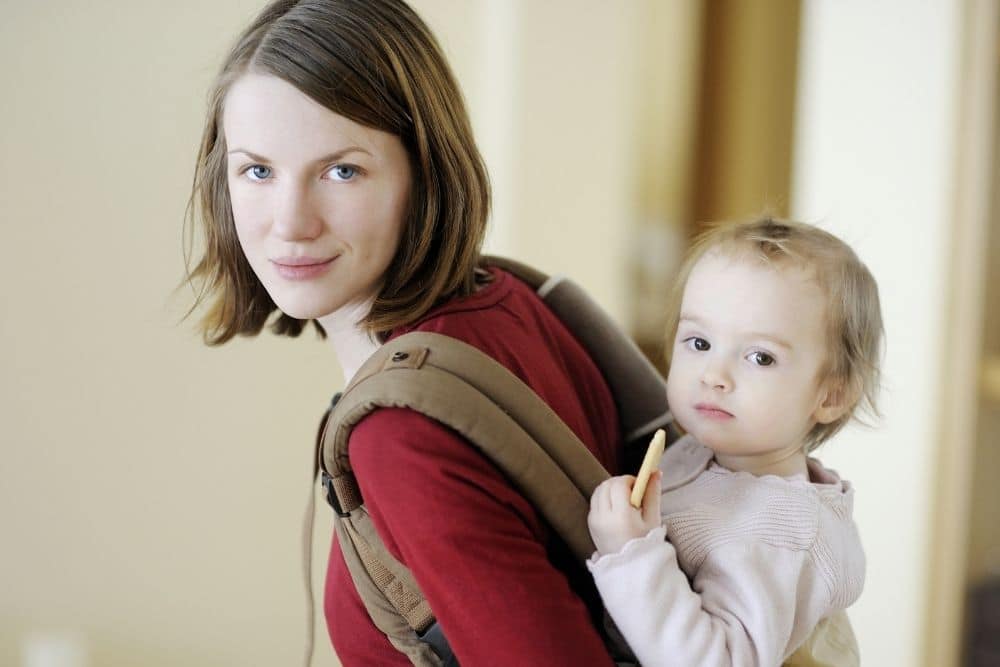
You can use different baby carrying positions depending on age, weight, and development stage.
If you’re not clear what to do, go for a multi-option carrier like the Ergobaby Omni 360, which will be a great help. This baby carrier is perfect for all babies and can be used in various carrying positions. It does not even need an infant insert.
The Omni 360 is a wonderful All-In-One Ergonomic baby carrier for any parent!
It will grow with your baby and his needs.
Don’t use over long periods
Don’t use a carrier for an extended period. It may cause discomfort for your baby. Up to 45 minutes is considered okay.
Watch this video to see how to wear the carrier properly.
Frequently Asked Questions
What are the Types of Baby Carriers?
The baby carrier comes in three styles and is an excellent gift for any parent.
Wraps: These are long stretchy pieces of fabric that you can tie around your body, usually over your shoulders and around your mid-section, to create a carrier.
Slings: This is a long piece of fabric that goes over one shoulder and across your torso.
Soft-Structured Carrier: These are padded carrying “packs” that can be placed on your chest or back. They are supported with straps around your shoulder and back.
You can choose depending on what you believe will work best for your family.
Do you need a baby carrier?
In short: No. You don’t have to use a baby carrier with your infant.
Most items are not absolute must-haves. A baby carrier could be a nice item to have.
Some parents may do well without it.
That said, others cannot see living life any other way.
What are the advantages of using a baby carrier?
- It keeps you hands-free so you can wash dishes or care for other children.
- Use it as a stroller if you’re small on space in your home/car or if you are taking your baby to a place where it does not make sense to take a stroller.
- A good alternative to a high chair if you go out to eat or somewhere else, where you might not have access to a high chair.
- It helps to soothe the baby. Babies who are carried more are known to fuss and cry much less than infants who are only carried while feeding, especially during the first 3 months.
- You get to exercise, like walking or low-impact aerobics, with the baby close and warm.
- Allows you to breastfeed on the go.
Is there anything that I should watch out for?
Don’t keep the baby for too long in a front-facing position. It is pretty stressful if they cannot see their parent.
If your baby seems unsettled or uncomfortable or wants to sleep, you should use the inward-facing position.
What are the safety standards for baby carriers?
Look for a baby carrier with the European standard EN 13209-2:2005 or the US standard ASTM F2236-08.
What if I’m not sure how to fit my baby in a carrier or sling?
Ask the Store assistant to show you how to place the carrier correctly with your baby in it.
What are the best baby carriers?
If you’re interested in baby carriers, it’s important to look for one that: allows healthy hip positioning for your baby, is safe to use and is comfortable for you to wear. Read these posts on What are the best baby carriers and What to Look for when buying a baby carrier.
Conclusion:
The above tips will help to make your baby more comfortable in a carrier. It is important to note that no matter what methods you choose, it will take time to get your baby used to the idea and understand how he or she feels about being carried in a carrier.



1 thought on “9 ways to make your baby comfortable in a carrier”
Comments are closed.